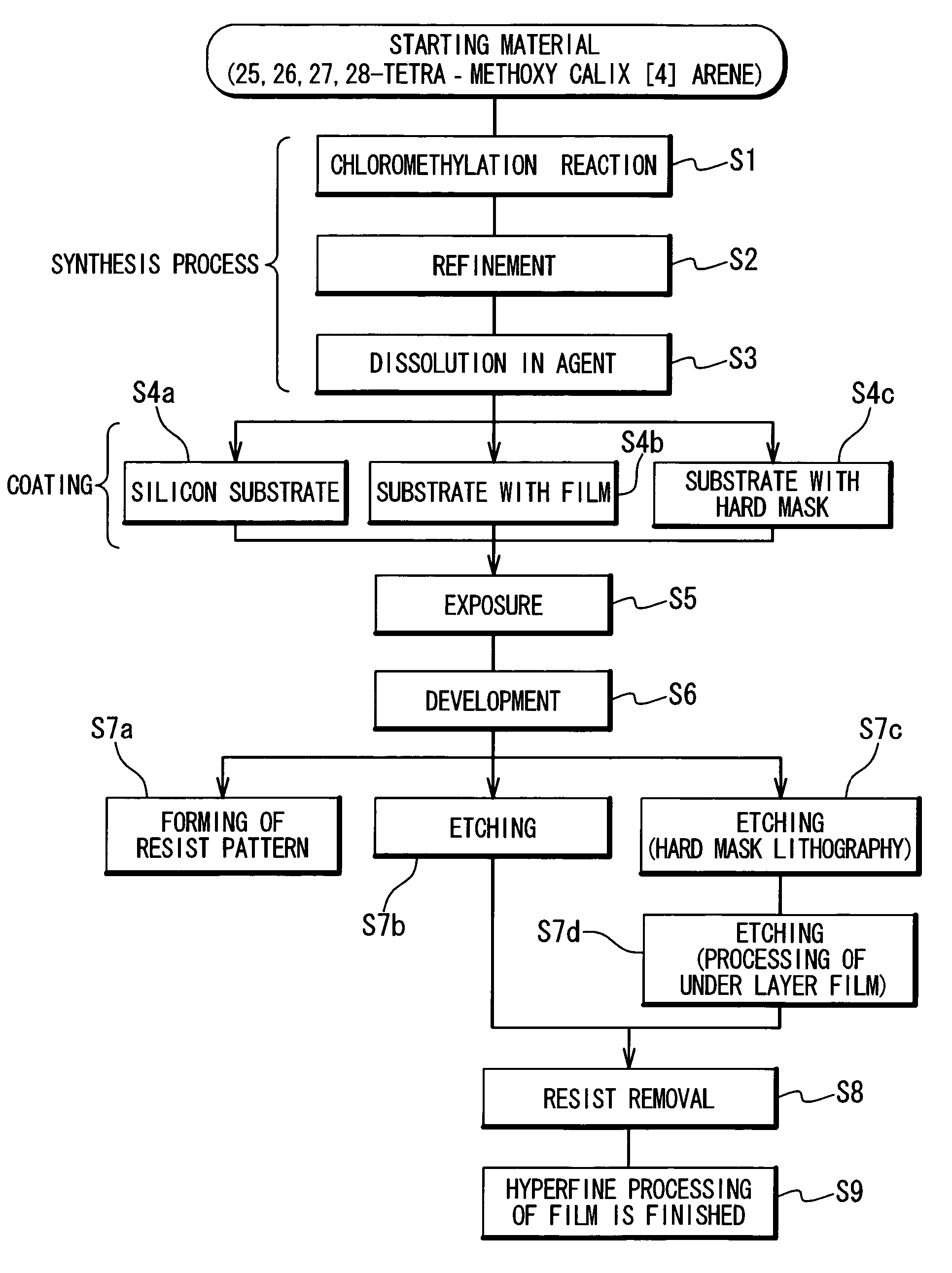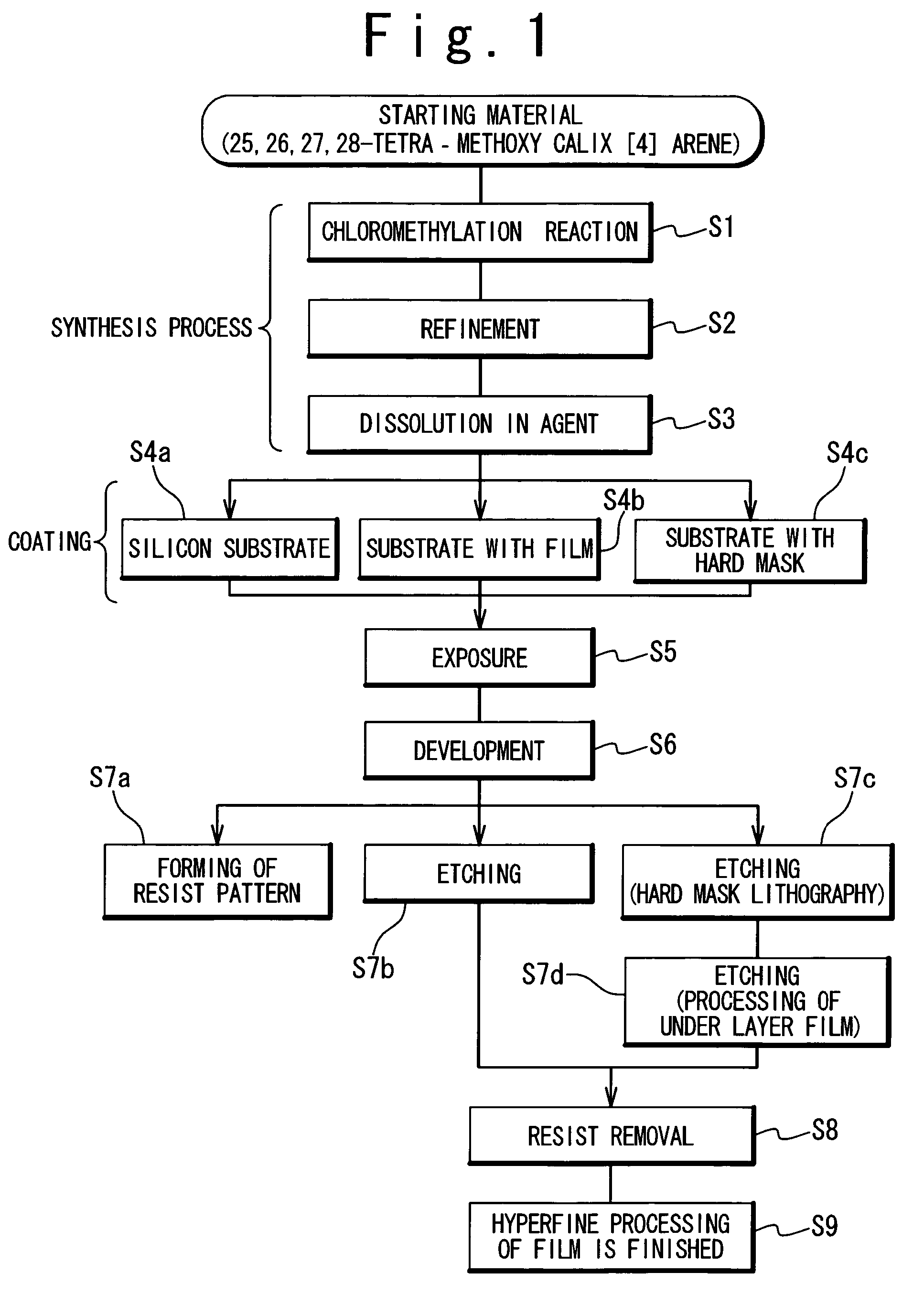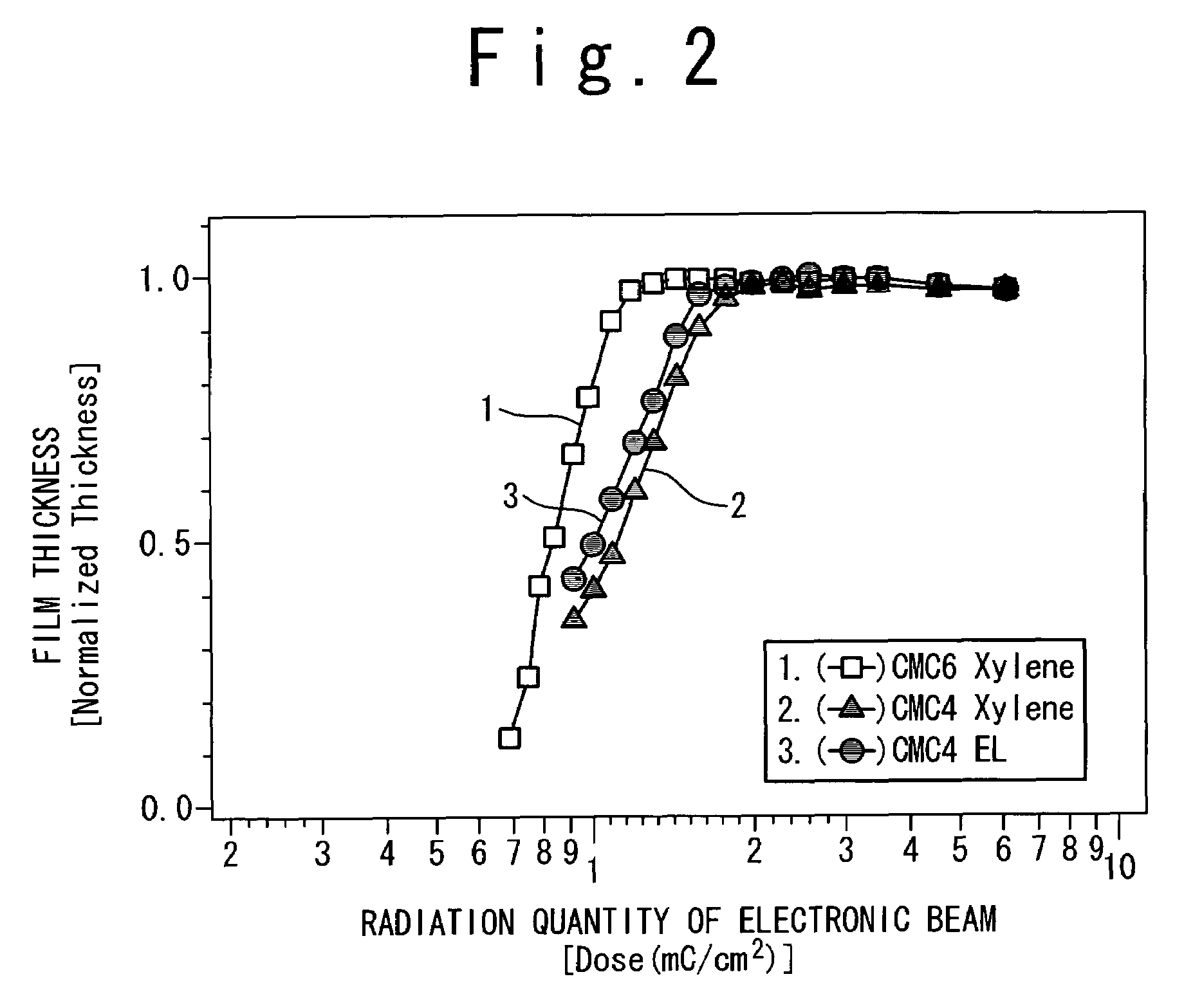Resist and method of forming resist pattern
a resist pattern and resist technology, applied in the field of resists, can solve the problems of not being able to use calixarene in the mass production site of semiconductor integrated circuits, unable to achieve perfect recovery, and unable to achieve the effect of reducing the number of resists, and reducing the difficulty of forming resist patterns
- Summary
- Abstract
- Description
- Claims
- Application Information
AI Technical Summary
Benefits of technology
Problems solved by technology
Method used
Image
Examples
Embodiment Construction
[0047]The best mode for carrying out the present invention will be described below by referring to the drawings.
[0048]FIG. 1 is a flow chart showing the synthesizing method of a resist and the forming method of a hyperfine pattern according to an embodiment of the present invention. As shown in FIG. 1, CMC4AOMe or CMC3OMe that is the resist material is synthesized by using the method disclosed in the foregoing ([Tetra-Hedron] written by Nagasaki et al., Vol. 48, Page 797-804, 1992).
[0049]At first, 25,26,27,28-tetramethoxy calix [4] arene that is raw material is dissolved in dioxane of 50-time amount. Para formaldehyde of 40-mol times, acetic acid of 5-time amount and 85% phosphoric acid of 10-time amount are added, and heated and agitated for 8 hours at 100 celsius degree. After the reaction, the reaction solution is poured into water with ice, and deposited white solid is filtered and extracted.
[0050]As the synthesizing step, the foregoing solid is dissolved in chloroform, and wate...
PUM
| Property | Measurement | Unit |
|---|---|---|
| width | aaaaa | aaaaa |
| wavelength | aaaaa | aaaaa |
| wavelength | aaaaa | aaaaa |
Abstract
Description
Claims
Application Information
 Login to View More
Login to View More - R&D
- Intellectual Property
- Life Sciences
- Materials
- Tech Scout
- Unparalleled Data Quality
- Higher Quality Content
- 60% Fewer Hallucinations
Browse by: Latest US Patents, China's latest patents, Technical Efficacy Thesaurus, Application Domain, Technology Topic, Popular Technical Reports.
© 2025 PatSnap. All rights reserved.Legal|Privacy policy|Modern Slavery Act Transparency Statement|Sitemap|About US| Contact US: help@patsnap.com



